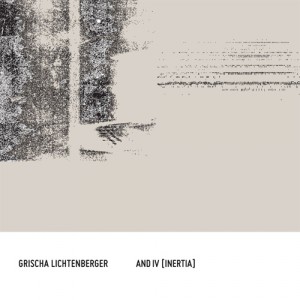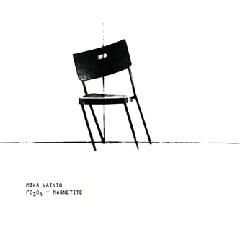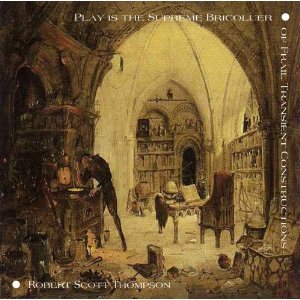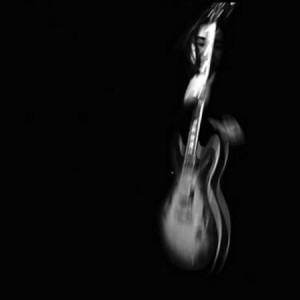
Weirdness for its own sake isn’t a virtue. But albums that defy genre conventions and attempt a totally unique sound are often among my favorites. Intimidated by neither tradition nor obscurity, artists that make unusual records are in many ways musical scientists, willing to take risks and toy with new or otherwise overlooked noises. And when their experiments are successful–when they combine experimental sensibilities and aesthetic appreciation–these artists deserve a bit of recognition. These records aren’t for everybody, but for those listeners willing to explore the outskirts of musicality, they offer something special. Each year, many weird records are released, and I don’t pretend to have heard most of them. That said, here are ten albums that pushed the envelope without tearing it apart, carving new sonic spaces with thankfully little regard to what music “ought” to entail.
While glitch techno isn’t a new genre, here’s a record that manages to fall into that category while also stretching far beyond it. Its erratic percussion belies a subtle yet consistent rhythmic focus. Tracks like “Uu78” and “0311_01 Re 0510_24” seem to be on the verge of collapsing into themselves or falling apart in a state of disjointed disrepair, but they never actually lose momentum or meander into petty abstraction. And there’s a refreshing variety of sounds to be found here that doesnt limit itself to the typical skipping-disc or friend-circuit approach: “Globalbpm” sounds like a remix of someone rubbing a balloon, while “12_11_13_Lv_1_C” recontextualizes a snippet of human speech as something that can sound just as cold and abstract as the surrounding mechanical glitches. And there’s a fascinating interplay between melody and atonal dissonance exhibited on tracks like “1210_08_Lv_4+,” in which beeps and screeches form a strange sort of harmony that sounds alien and robotic but is nonetheless decidedly musical.
As one half of the acclaimed Finnish experimental duo Pan Sonic, Mika Vainio is no stranger to pushing the limits of electronica. But this solo release is something else entirely, a starker and more unsettling beast than anything that duo has created. Beginning with an ominous, lonely clank, Magnetite juxtaposes eerie silence with blasts of digital noise; deep bass tones and bursts of radio static parry with cavernous whooshes, thunderous and distant plodding, bell-like tones, and occasional beeps that sound creepily facile by contrast. If Michael Myers sought to make a “dark ambient” album, this would probably be the result. Like his plain white Halloween mask, this album is staunchly minimal yet nonetheless terrifying. And both seem to be unpredictable, unstoppable forces. Most of all, Magnetite succeeds by making its most unnerving moments not its loudest shrieks or busiest passages but rather its many moments of quiet, the listener breathlessly anticipating what’s going to break the silence (and usually getting it wrong). Despite all this, Magnetite is far from an unpleasant experience; as is the case with great horror movies like Halloween, there’s something undeniably fascinating about the terror we witness that brings us back again and again. Vainio does his job mercilessly well, no telephone cord necessary.
08.
Robert Scott Thompson
[Aucourant Records]
A bricoleur is defined as “one who engages in bricolage,” or “construction (as of a sculpture or a structure of ideas) achieved by using whatever comes to hand.” Robert Scott Thompson, who heads the Center for Audio Recording Arts at Georgia State University’s School of Music, certainly assembles a bricolage of sounds, moods, and influences, from ambient space music synths to clattering field recordings to modern classical strings, bass flute, and piano. This is an audio collage that respects the individuality of its disparate elements while effectively working them into a coherent whole. A truly abstract work, Play Is the Supreme confronts the listener with the prospect of unrestrained sound. It’s also a remarkably deep recording; Thompson clearly puts his studio expertise to good use, crafting an album that densely teems with activity guided by the experienced hand of a compositional veteran. This album’s cover seems to depict an alchemist at work, and that’s just what Thompson is. These constructions may be “transient,” but they’re certainly not forgettable.
Julian Cope is a British rock musician who first rose to prominence as a founding member of the post-punk band The Teardrop Explodes. More than thirty years later, here he is with Woden, which his website describes as a “thirteen-year-old sonic monolith” and an “enormous meteorological cloud of music.” Largely composed using a single synthesizer, this 72-minute composition nonetheless sounds absolutely otherworldly–or perhaps underworldly, given Cope’s interest in Neolithic paganism. What sounds like a rushing wind tunnel envelopes the entire track, with excursions into Eliane Radigue-esque digital minimalism and the haunting medieval echoes of “the Yatesbury bellringers of 1998.” The end result comes across as anything but electronic, at times sounding downright ancient. Fans of Xela’s cassette trilogy (The Illuminated, The Divine, The Sublime) and Kevin Drumm’s omnipresent drones, take note: Woden beckons, though it won’t raise its voice to grab your attention.
Like Tim Hecker’s widely praised Ravedeath, 1972, this album was recorded in a church. In both cases, the majestic setting such a building provides seeps into the music, which in this case is a six-track album largely performed by a string quintet. Opening with a plaintive three-part suite (“Apollo Winceleseia”) presumably named after the East Sussex village where the church is located, Yclypt is as beautiful and melancholic as the autumnal forest depicted on its cover. At equal turns harmonious and dissonant, the strings play off each other in layered clusters of pitch and tone; low drones rumble beneath scratchy mid-range chords and intermittent soaring high-pitched notes, the latter of which appear most prominently on “Apollo Winceleseia III.” A panoply of playing styles keeps this half-hour record from ever sounding monochromatic, and Moult does a wonderful job of emphasizing the physical space in which these strings operate; we feel like we’re in the room with these performers, letting their tones wash over us instead of simply hearing recordings of such filtered through digital channels. Yclypt is capped off by the ten-minute “Symbol of an Infinite Past,” a languorous rumination that recalls the chilly sonorities of Brahms.
Bass. I embolden it to highlight the thickness of the instrument, the stark sonorous quality that makes it such a versatile instrument. It can provide the underpinning for the rhythm section of a rock song; it can ride under techno floor-fillers in analogue jabs; it can flow in quietly sparkling arpeggios on any number of jazz and blues records. It’s one of the most important instruments in a band’s arsenal, yet we never hear much of it on its own. Thankfully, Kentucky-born experimental musician Bill Laswell has over the course of his storied career worked to change that, exploring the nuances of the instrument’s timbre as it applies to music from genres as varied as dub, metal, and ambient trance. But with Means of Deliverance, he strips away the accoutrements, wielding only a fretless acoustic bass guitar and giving it a workout seeped in spacious silence and folk traditions. Yep, this is a ten-track collection of bass solos, and it’s absolutely beautiful. Laswell’s tones ring out with rich resonance; he deftly investigates the contours of his instrument with grace and, crucially, patience: he’s obviously a master of his craft, but he never feels the need to show off. There are no runaway jams or sliding scales to be found here; instead, we get a series of meditative explorations of the bass’s upper and lower registers (sometimes acting in unison). Sometimes, on the more “uptempo” moments here, like “Buhala,” it sounds more like Laswell’s providing the bassline for some timeless folk number than trying to show us how deftly he can fingerpick, and it doesn’t even matter that we can’t hear the other hypothetical instruments; he doesn’t need them, as these tracks sound fully-formed and thorough on their own. At other points, such as “Aeon” and “Epiphaneia,” he lets his bass buzz with complete disregard for genre or conventional form. Laswell can do many things with his bass, but his most consistent ability is letting it sing.
Tennis, anyone? This Italian dude samples sounds sourced from tennis matches, letting them effortlessly bleed into his atmospheric downtempo. On opening track “Wimbledon 1980,” for instance, the sound of a racket striking ball–with accompanying polite audience applause and intermittent grunts–provides the percussion, on top of which he applies delicate layers of synth pads and bass. “It must be one of the most epic tie-breaks played anywhere,” says one delightfully British announcer to another, describing John McEnroe’s well-fought loss to Björn Borg in the men’s sol final at the titular tournament. As the track fades out, we hear the announcer one last time: “What could be better?” Track two, “In the Streets,” uses decidedly more amateur source material, as distant hurried voices call out in some imagined scrimmage or pick-up exhibition and footsteps scuttle across the court (along with, of course, more volleys). “Golden Shoes” is a more delicate affair, with glassy keyboard tones volleying with crisp, hollow beats that recall–what else?–the sound of a confident forehand strike as well as an unexpected choir sample. “Deuce,” on the other hand, begins with the crinkling of old vinyl before introducing a grimey bassline and, uh, marimba accents. And house music handclaps? Are we still hearing tennis sounds here? Doesn’t matter; not even halfway through this album, we’re already sucked into Indian Wells’ dream world. The whole thing is like if Dntel were asked to contribute to a Jock Jams volume, or if the US Open asked Actress to pen its theme one year. Were it any longer, Night Drops might start to become an exercise in gimmickry; as it stands, however, at a lean 37.5 minutes, it’s a perfectly muted and sleek record of downtempo psychedelia (psychedelic downtempo?) that makes for smooth listening on and off the court.
On this album, Japanese guitarist Suzuki Junzo wails on his weapon of choice for, like, a fuckin’ hour. Drone, noise, blues, psychedelic rock, ambient, goddamn folk: Junzo approaches a variety of genre influences and proceeds to kick the shit out of each of them. “Shivering Larry’s Last Freak Out” riffs like Skullflower on Klonopin, while “Studies for Three Broken Canes of Dr. Dream” somehow makes howling screeches sound soothing and zen-like. Like the aforementioned Bill Laswell album, Ode To A Blue Ghost is entirely a solo affair, but whereas the former ekes out quiet overtones, Junzo absolutely obliterates his otherwise empty sonic environment with all the crunchy power his electric guitar can muster. That I don’t have more to say about this record is not an indication of anything but my inability to articulate coherent thoughts in the face of Junzo’s epic squalls. This is a good album to get drunk to. If I were still a teenager, I’d like to imagine I’d blast this album alone in my room, a classy take on adolescent angst. Alas, I’m just a twenty-something white dude who’s left to wonder what else is bubbling under the surface in Tokyo. Junzo is a rebel with a singular cause: rocking your face off. Damn, just thinking about this record makes me want a cigarette.
Step one: be Dutch. Step two: find an abandoned Indian harmonium in someone’s basement. Step three: play the harmonium, but don’t focus on the droning tones it produces. Instead, listen to the creaky machinations of the instrument itself: “cranky wooden panels, the squeaking metal pins, and the airwaves escaping from the dilapidated bellows.” Step four: balance the wheezing groans and cranking pumping motions with minimal tonal drifts floating in the background, the inverse of a typical harmonium performance (in which the resultant drones are the focus and the sounds of the instrument itself are an overlooked by-product). Step five: shatter the listener’s expectations of how we approach and appreciate sound and performance. Laboriously show how even in drone music, the medium can very well be the message. Glean poignancy from said creaky machinations. Take as long as you need; Kaelen plays for over an hour on this record. Step six: divide the recording into five pieces, give them cryptically abstract titles (“The Horse,” “The Dream”), and call them a “tragedy” even though it’s anything but. This album is desolate and dreary yet strangely life-affirming, a stunning testament to the merits of old-fashioned human intervention in an increasingly digital industry. The Tragedy That Drowned Itself is not concerned with “what” music sounds like but rather how that sound happens, and it turns out to be a fascinating story we didn’t even realize needed to be told.
I know literally nothing about this artist beyond the fact that he seems to be German, as evidenced by this album’s release on Roetgen-based label Blüthenstaub Musik. Oh, and this album’s title translates to “The Sorrows Of Young Louis Exitus.” That’s all I’ve got.
And that’s all we need to know. “Intimität” opens the disc with a precious, “Avril 14th”-esque piano phrase. Then, water runs; birds squawk; backmasked piano dripping with synth twinkles jolts the listener to attention; an echoing vibraphone appears, along with an innocuous plucked string section that sounds straight out of Leave It To Beaver. The track constantly seems to be rising to some blissful climax, but then it ends, a lone high-pitched piano note carrying us into track two, “Dein Blick Durchdringt Mich.” A crowd bustles in the background; a harp stutters to life; hearty, darker piano chords seem to herald an imminent beat drop, and we finally get it…in the form of ramshackle woodblocks that recede as suddenly as they appeared. A wash of noise. An actual drumbeat! It lasts for less than a minute.
We can still hear the crowd as well as the piano; ricocheting strings pop up at track’s end. “Wie Dein Herz Mich Trägt” begins with a manipulated acoustic guitar before being joined by shakers, bell-like keyboard, more birdsong, some buzzing insects, and synth-processed cello. The basic repeating melodic phrase is similar to what came before but also somehow different. This whole album progresses organically, each instrumental and harmonic passage arising from that which preceded it, building off what we’ve already heard while subtly prepping us for what’s to come. You know Splash Mountain? How it’s essentially a lazy river ride that ends in a massive steep slide? And how before the drop, we get disingenuously placid animatronics that pretty much retell the stories from Song of the South? Yeah, this album’s kind of like that, only instead of a single drop at the end, we just keep circling the rapids, bumping and rising and cascading our way through all manner of musical storytelling. Each chord passage is heartbreaking; half-remembered melodies float in and out of the listener’s consciousness, as in a dream. When the clap-and-stomp disco beat of “Deine Küsse Letzte Nacht” finally arrives, it’s a revelation, strings providing the most luscious and gorgeous dance music accompaniment since Pantha du Prince’s “Saturn Strobe.”
But LouisEX is far too restless to replicate that lengthy opus, and after a couple minutes, he’s done with it, returning to the backmasked instrumental treatments and windchimes and woodblocks and guitar of…before. Another uptempo beat arrives then pauses then bounces back while reverbed something (xylophone?) provides heavenly accompaniment. We’ve heard these moments before, but at the same time, we haven’t. Time works in strange ways on this album; without ever even approaching redundancy, LouisEX cycles through rhythms and moods with a child’s endless curiosity. Elements from one track mix with those from another to recall a third track’s tune, yet it’s all done in the service of producing something new. “Dann Bist Du Gegangen” melodically recalls the album’s first two tracks, but the jazzy, cymbal-heavy drumbeat is an unexpected twist. Then it cuts out, the plucked strings come back–somehow, this doesn’t sound disjointed at all–and…a man groans? What is going on here? Some themes fade out; others cease suddenly. That LouisEX is able to weave a coherent narrative out of these myriad sonic explorations–modern classical, ambient, glitch, house, folk–is remarkable. And his narrative is filled with home runs; the string section on “Alle Zeit Ungezählt,” for instance, would be enough to carry most techno tracks for a good few minutes at least, but in this case, their snappy rhythmic groove is interrupted then restarted, the musical equivalent of pulling out the cartridge and blowing on it before jamming it back into your Super Nintendo. After three minutes, we get rainfall and silence. We’re only halfway done at this point.
Birdsong and insect buzzing provide a thematic constant, casting an aura of wilderness discovery over the twinkling keys and other sundries. It feels like we’re happily, deliriously in the jungle; have we passed this circle of trees before? They all look kinda the same, but they’re also all different. This one’s got jutting branches that bend like human arms; that one’s got roots we haven’t heard before, a drumbeat that Prefuse 73 would die for; and just up ahead, we can smell the cottony colors of remorse and wistfulness and, strangely, hope. Splash! Have we jumpted in the river? Guitar and shaker. More marimba. I’m not sure whether these instruments are MIDI-produced or actually played. Either way, their variety is impressive, and their emotional range is breathtaking. The return of the delicate piano hammers, and then those aching strings. There’s a cyclical quality to the proceedings here, not so much a guiding focus as it is a seeming force of nature, like the roaring rivers and cries of wildlife that pepper and punctuate this album’s many moods.
Die Leiden Des Jungen Louis Exitus is a genre-hopping tour de force that’s an absolute joy to experience again and again. It’s not even an hour long, but its scope is as vast and distant as tomorrow’s glowing horizon. More than any album I’ve heard this year, Die Leiden sounds alive and teeming with possibilities. As I said earlier, I don’t know who LouisEX is (or whether he’s even a man, for that matter). But if this is what his sorrow sounds like, then can you imagine his happiness? The magic thing is that we can; it’s here, amidst the sadness and the excitement. I’ve been singing this album’s praises all year to anyone who will listen. In fact, if you Google it, a capsule review I wrote for another publication is the second result. But I wish it weren’t; I want Google to be brimming with results, with people talking about this album, with impressions and interpretations and analyses, and most of all, with the music itself. The sliding electric guitar on “Als Du Meine Hand Berührtest” builds into a psych-rock denouement that’s among the most cathartic moments on an album chock full of ‘em. Yet even here, that plaintive piano still makes its presence known. In LouisEX’s world, there’s no such thing as genre: only glorious sound.











